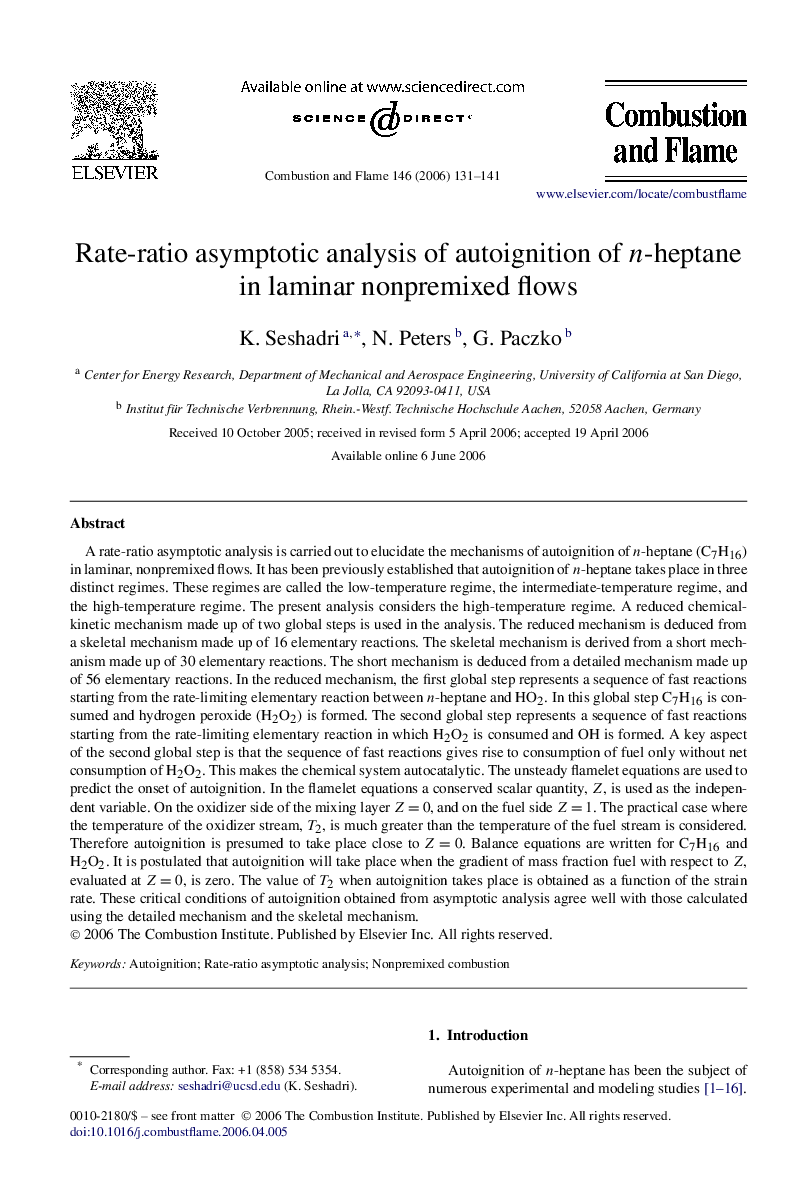| Article ID | Journal | Published Year | Pages | File Type |
|---|---|---|---|---|
| 169909 | Combustion and Flame | 2006 | 11 Pages |
A rate-ratio asymptotic analysis is carried out to elucidate the mechanisms of autoignition of n-heptane (C7H16) in laminar, nonpremixed flows. It has been previously established that autoignition of n-heptane takes place in three distinct regimes. These regimes are called the low-temperature regime, the intermediate-temperature regime, and the high-temperature regime. The present analysis considers the high-temperature regime. A reduced chemical-kinetic mechanism made up of two global steps is used in the analysis. The reduced mechanism is deduced from a skeletal mechanism made up of 16 elementary reactions. The skeletal mechanism is derived from a short mechanism made up of 30 elementary reactions. The short mechanism is deduced from a detailed mechanism made up of 56 elementary reactions. In the reduced mechanism, the first global step represents a sequence of fast reactions starting from the rate-limiting elementary reaction between n-heptane and HO2. In this global step C7H16 is consumed and hydrogen peroxide (H2O2) is formed. The second global step represents a sequence of fast reactions starting from the rate-limiting elementary reaction in which H2O2 is consumed and OH is formed. A key aspect of the second global step is that the sequence of fast reactions gives rise to consumption of fuel only without net consumption of H2O2. This makes the chemical system autocatalytic. The unsteady flamelet equations are used to predict the onset of autoignition. In the flamelet equations a conserved scalar quantity, Z , is used as the independent variable. On the oxidizer side of the mixing layer Z=0Z=0, and on the fuel side Z=1Z=1. The practical case where the temperature of the oxidizer stream, T2T2, is much greater than the temperature of the fuel stream is considered. Therefore autoignition is presumed to take place close to Z=0Z=0. Balance equations are written for C7H16 and H2O2. It is postulated that autoignition will take place when the gradient of mass fraction fuel with respect to Z , evaluated at Z=0Z=0, is zero. The value of T2T2 when autoignition takes place is obtained as a function of the strain rate. These critical conditions of autoignition obtained from asymptotic analysis agree well with those calculated using the detailed mechanism and the skeletal mechanism.
